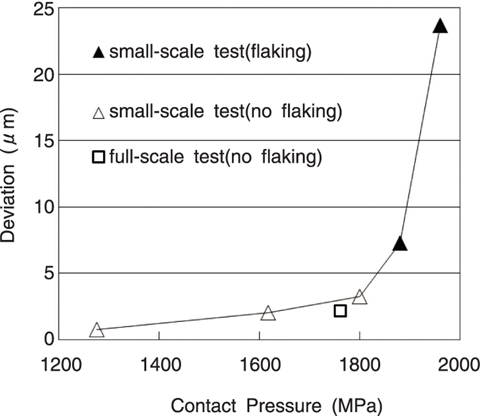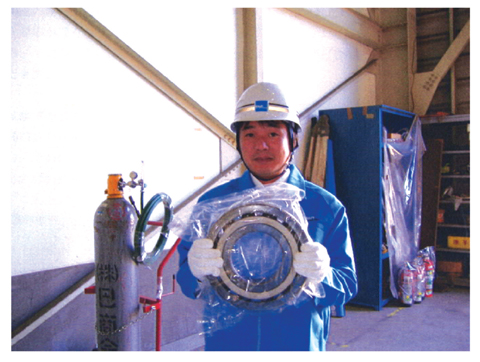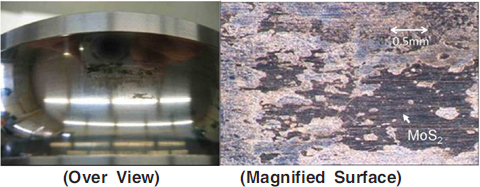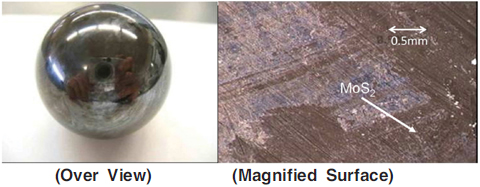
Fig.1-11 Bearing ring roundness

Fig.1-12 Full-scale fuel handling machine bearing

Fig.1-13 Bearing ring after endurance test

Fig.1-14 Bearing ball after endurance test
Our commercial-use sodium cooled reactor design includes a compact reactor vessel with a new in-vessel fuel exchange system. The upper inner core (UIS) structure has a slit for a fuel handling machine (FHM). The FHM removes and inserts each fuel subassembly through the UIS slit without removing the UIS from above the core.
The FHM has to function in sodium and in the gas inside the reactor vessel cover including sodium vapor. The usual lubrication materials such as grease are not usable with sodium, since sodium is chemically active and the greases could pollute coolant sodium. Therefore the FHM bearing requires a special lubrication. Besides, the FHM uses ball bearings, to avoid interference of the UIS slit with the FHM during an earthquake. Since ball bearings generally are subject to high contact pressure, endurance of the FHM bearings is one of the issues for the FHM development.
In this study, 1/10-scale and full-scale bearing endurance tests were conducted. In the 1/10-scale test, several ring and ball materials were tested to find a suitable material combination for the FHM bearing. The relation between endurance and contact pressure was determined. The 1/10-scale tests were conducted at 250°C, applying 20000 vibration cycles in the air. The temperature was a little higher than the FHM operation temperature and the number of vibrations was equivalent to ten refueling operations. Based on the 1/10-scale test results a bearing with stainless steel rings and ceramic balls was selected. To enhance lubrication, MoS2 coating on the bearing rings was adopted. The results also showed that surface flaking would start at a contact pressure of approximately 1800 MPa. Deviation of the inner ring grew larger as the contact pressure became larger. When the deviation went beyond 3.5 to 7μm, the deviation increment rapidly grew larger, as shown in Fig.1-11.
In the full scale test, a full-scale FHM bearing was manufactured and an endurance test was conducted in argon gas with sodium vapor simulating the FHM operating conditions. The full-scale bearing is shown in Fig.1-12. The contact pressure was controlled to be 1745 MPa, considering the surface pressure that can be maintained. The other test conditions are similar to the 1/10-scale tests. Fig.1-13 and Fig.1-14 show surface conditions of rings and balls after tests. There is sign of some MoS2 transfer between ring and ball but overall surface conditions were maintained well without any flaking. The deviation of the inner rings was observed to be 2μm, which is lower than the limit suggested by the 1/10-sacle tests. Those results show that this bearing is suited for the FHM operating conditions.
In future studies, a full scale FHM test in the air and a gripper mechanism test in sodium are planned as part of JSFR FHM development.